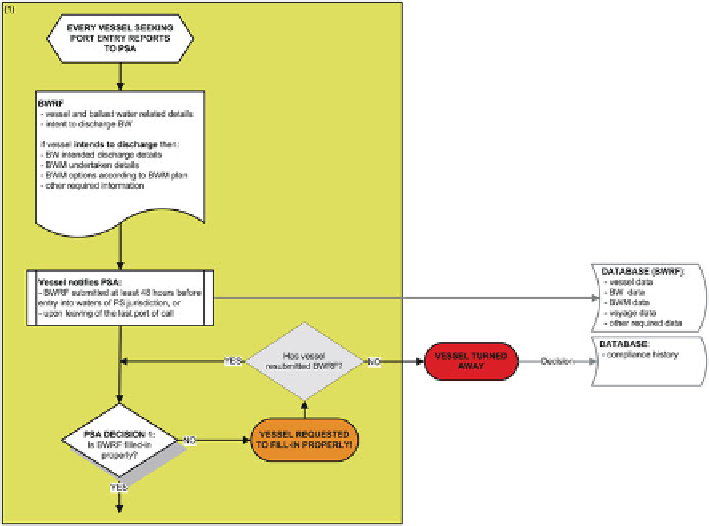Environmental Engineering Reference
In-Depth Information
the presentation and description of all BWM DSS elements in sequence. The BWM
DSS was also applied to a real world scenario taking the Port of Koper, Slovenia, as
an example (see chapter
“
Ballast Water Management Decision Support System
Vessel Intended to Enter a Port
Each vessel seeking a port entry permit has to submit ballast water information
requested by the PSA. This can be done via BWRF or electronic means, depending
on PSA requirements. To implement selective BWM supported by BWM DSS, bal-
last water reporting in advance is crucial, hence it needs to be a mandatory require-
ment for port entry (Fig.
5
).
BWRF needs to be submitted on time and properly fi lled-in. BWRF needs to be
submitted as soon as possible; e.g., when the vessel knows what ballast water opera-
tion is expected in the next port of call. PSA needs to have a submission deadline,
e.g., 48 h before a vessel enters the waters of its jurisdiction. Early submission may
not always be possible because two ports may be too closely located. In such a case
it is recommended that the vessel submits the BWRF upon leaving the last port of
call. Early submission of BWRF is critical to give the PSA suffi cient time to take a
decision on appropriate BWM measures, as well as for the vessel to be in a position
to conduct the required BWM practice.
Fig. 5
BWRF submission process (
PS
Port State) (Enhanced after David
2007
) (This fi gure can
be downloaded from
http://extras.springer.com/
)

Search WWH ::

Custom Search